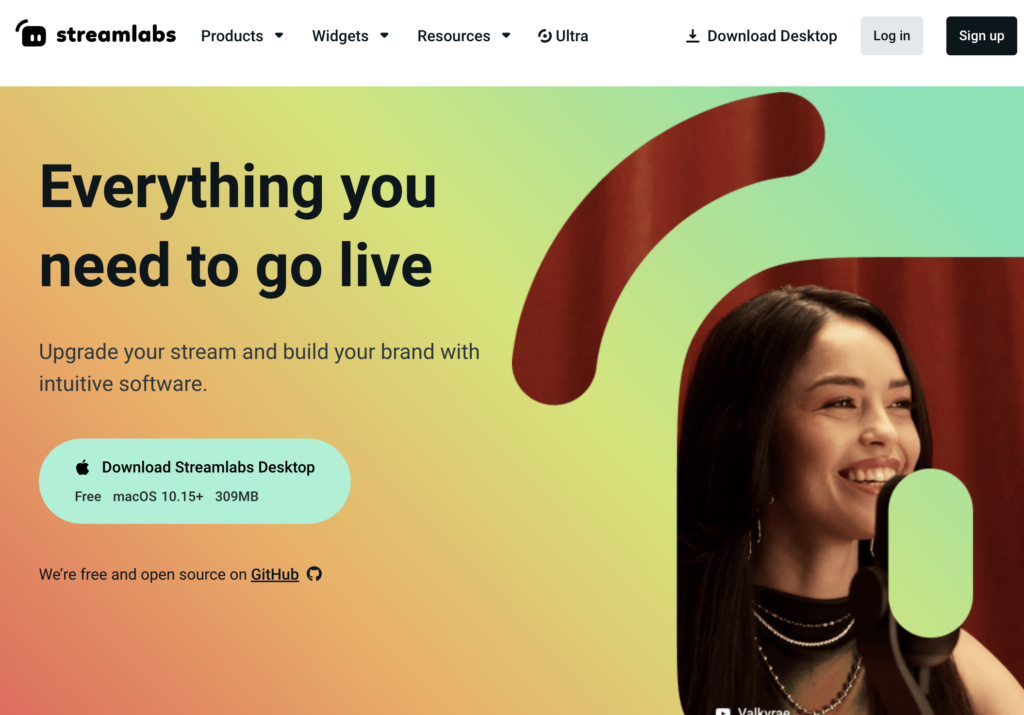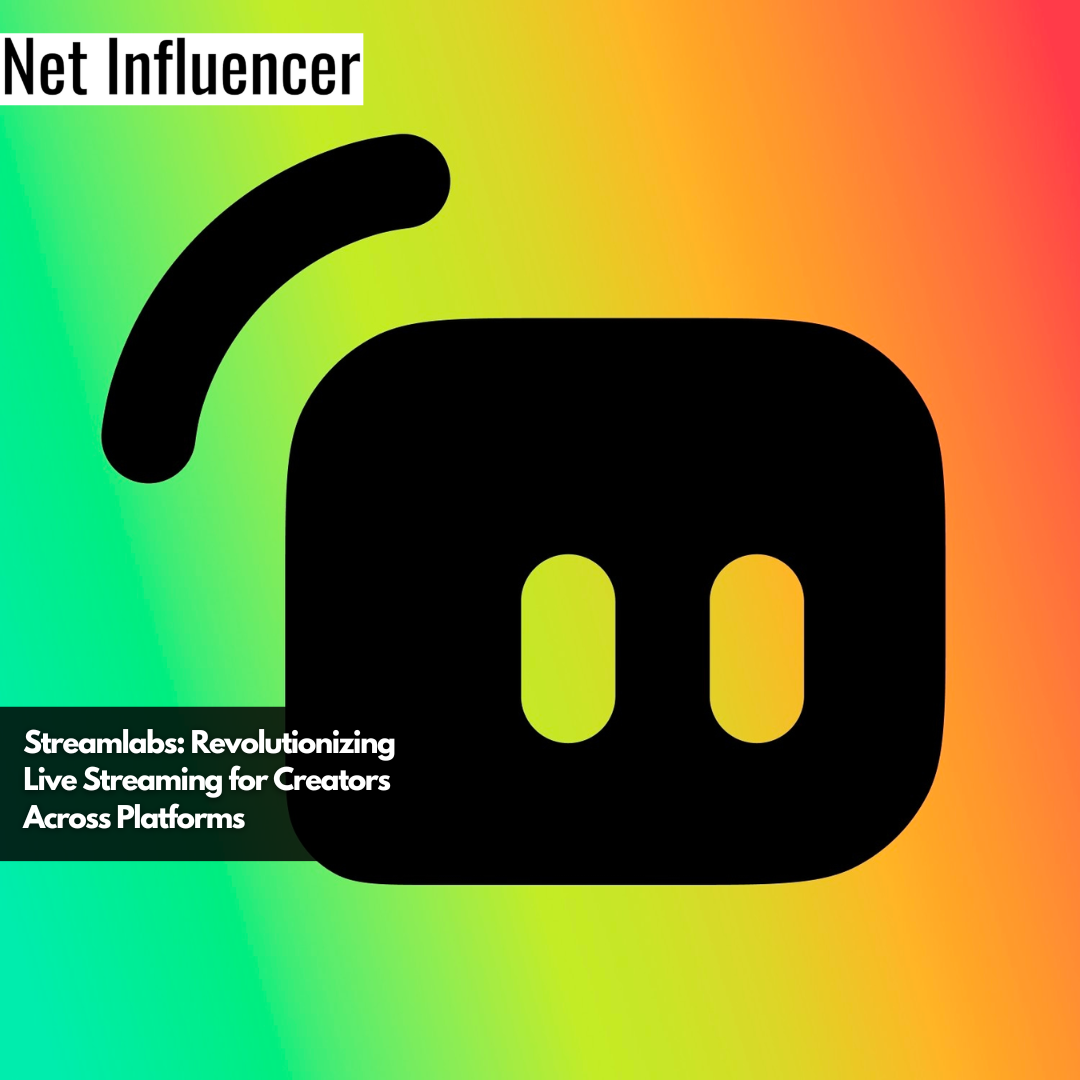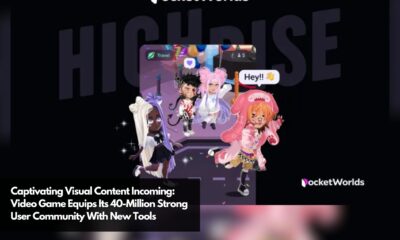Technology
Streamlabs: Revolutionizing Live Streaming for Creators Across Platforms
Originally founded in 2014, Streamlabs has spent nearly a decade focused on a mission of empowering creators to turn their passion into successful personal brands through live streaming. Now part of Logitech, the brand aims to make the live streaming process as easy and intuitive as possible, positioning itself as an advocate for the broader streaming community and culture.
To fulfill this goal, Streamlabs offers a wide array of integrated streaming products. Most popular among these is Streamlabs Desktop, the company’s broadcasting software that lets streamers transmit footage from their computers – including their facecam, gameplay footage and more – to various streaming platforms. Beyond the core desktop streaming tools, Streamlabs has expanded into mobile and web-based broadcasting options to accommodate users without access to high-powered machines. Products like the Streamlabs mobile broadcasting app and web-based streaming tools cater to users operating off phones, tablets, Chromebooks and other devices.

Even in its early days, Streamlabs saw opportunities around streamer-viewer engagement in the form of alerts and tipping. Alongside its range of broadcasting options, the company facilitates features designed to increase interaction between stream audiences and performers. As live streaming itself has grown, so too has Streamlabs suite of community-building tools.
Having “grown up alongside the creator economy,” Streamlabs has adapted over time to seismic changes impacting digital content creators. Early on, the company noticed growth beyond just gaming into more general “IRL” streaming and variety content. But as Ashray Urs, Streamlabs’ head of product notes, the COVID-19 pandemic represented a major accelerant – with many musicians, talk shows, DJs and other talent turning to live streaming amidst lockdowns. Practically overnight, the world caught up to live streaming’s possibilities.
Streamlabs Readies For Live Stream Shopping’s Arrival Into The Mainstream
Focus on the Streaming Ecosystem
With its focus squarely on serving creators’ needs, Streamlabs believes its unique position enables it to assist clients in optimizing across platforms. As Urs explains, “If you’re a Twitch streamer, you have a YouTube channel posting videos, an active Instagram and Twitter, and you’re posting short form content on TikTok.” Catering to this multi-channel, cross-platform approach has become a priority. While platforms like Twitch and Facebook Gaming connect creators to fans, Streamlabs can provide the tools for both building audiences and better engaging existing supporters across social media.
Having weathered gaming’s growth into IRL streaming and the pandemic’s livestreaming boom, Streamlabs now caters to a world where talent leverages each platform’s strengths while remixing content for each. With nearly a decade’s front-row seat to seismic changes, the company aims to help users navigate what cross-platform optimization looks like today.

Cultivating connection between creators and their fans has always been central to Streamlabs. The company traces this focus back to the company’s first products – tools for generating alerts when a viewer follows a streamer, ensuring the creator can acknowledge these community milestones on-air. Beyond recognition, Streamlabs enabled monetization of this engagement via tipping and notifications. But the ultimate aim remains strengthening the creator-viewer relationship.
Whether through its broadcasting software highlighting community activity, tipping features facilitating deeper support or chat moderation fostering a positive environment, Streamlabs keeps community building core to its product design. Urs and the company also believe that robust audience connection represents a key advantage of live streaming over pre-recorded video. Tools that strengthen this interactivity aim to realize that full potential.
Yet the company knows bolstering success means extending beyond just the live streaming realm. As Urs notes, “Someone that’s streaming to Twitch is probably posting short-form content to TikTok. Someone that’s watching Twitch is probably also sometimes watching TikTok.” Effective community-building now requires multi-channel distribution and branding.
To that end, Streamlabs focuses on aiding creators in transforming viewers into true supporters across platforms. Reminding fans when streams go live, facilitating financial support through tipping and standardizing branding all help solidify audience commitment. That loyal community then funnels back into higher viewership and a repeat cycle of retention.
Just as importantly, creators must adapt top-performing content for consumption on TikTok, Instagram and YouTube. As Urs summarizes, “Helping build those cross-platform connections between your viewership, truly turning them into a community, is very much at the heart of what we’re trying to do.” Established streamers may drive the majority of hours watched on Twitch itself. But nurturing new audiences on emerging platforms remains critical to long-term growth.
Monetization and the future of the creator economy
Enabling creators to turn their passions into a living has motivated Streamlabs since its inception. As head of product Ashray Urs explains, “Helping them with tools like tips and merch is something we’re always thinking about as we build different products.”
For creators aiming to stream full-time, that supplemental income can prove pivotal in sustaining early efforts. Even as platforms like Twitch and Facebook Gaming introduce broader monetization models, direct contributions still empower fan bases to propel a career forward.
But Streamlabs also facilitates ongoing merchandise sales as another incremental revenue stream. Here creators can effectively extend their brand by offering physical goods – items like apparel, drinkware and collectibles that allow fans to financially support while publicly displaying allegiance. As channels grow in popularity, branded products represent an obvious means of further monetizing that community.
Urs sees the creator economy as undoubtedly expanding thanks to seismic events like the pandemic. But accompanying the growth is an evolution in platforms catering to new mediums and formats. No longer just gaming streams and long-form video, creators now leverage short-form video and new avenues like live shopping. As Urs summarizes, “Creators are creating across these different platforms to really embrace those opportunities.”
An influx of competitors has also raised the stakes for existing players. The emergence of platform Kick attracting high-profile talent pressures alternatives platforms to remain creator-friendly. With X (formerly Twitter) supporting streaming and initiatives like Twitch’s multi-streaming support, there’s renewed momentum behind live video itself. Urs believes such competition ultimately benefits creators through more appealing monetization models and features.
But the cross-platform trend may represent the most exciting shift underway. Through tools like Streamlabs’ dual-stream output enabling simultaneous horizontal and vertical broadcasts, creators can now customize streams for TikTok, Instagram and other vertical mediums. Reformatting existing content unlocks opportunities to engage viewers who may never directly visit Twitch or YouTube. Urs sees enormous potential here to expand reach.
He also expects live streaming to play a prominent role in 2024 election coverage. Referencing the viewership highs produced by Alexandria Ocasio-Cortez on Twitch, political adoption may drive fresh waves of curiosity and participation. And if shopping integrates more directly with streaming popular personalities, entirely new monetization and engagement models could emerge.
While unsure if commerce will hit an inflection point this year, Urs calls the pairing seemingly inevitable long-term. Models popular abroad point to a future where selling products directly to live audiences scales to mainstream success. Though just one of many possible advancements as barriers between social media, entertainment and shopping further erode.
Stepping back, Streamlabs remains focused on capitalizing on opportunities emerging from such platform consolidation and format expansion. Urs breaks today’s landscape down into three key trends:
First, intensifying competition between new entrants and established players making the ecosystem more creator-friendly at large. Second, the meteoric rise of short-form, vertical video unlocking incremental audiences when content reformatted appropriately. And third, eventual convergence across historically distinct domains like live streaming, social commerce and more.
What’s next for Steamlabs
Looking ahead, Streamlabs sees ample opportunity stemming from increased competition between platforms and the rise of cross-platform creators. Urs notes the company believes a growing array of streaming options will ultimately benefit talent through more appealing features and monetization models – a trend Streamlabs aims to capitalize on. The developer also plans to build on tools facilitating multi-channel content distribution, with Urs explaining “we’re just getting started” in enabling streamlining of clips and highlights for distinct social platforms. Beyond enhancing existing products, Streamlabs is eager to expand its reach, including through a new plugin dramatically improving integration with the popular OBS streaming software.
Having built an extensive suite of streaming tools already, Urs sees seamless interoperability as the next step in Streamlabs bringing onboard millions more creators relying on both OBS and its offerings concurrently. With innovation across expanding platform partnerships and better catering to cross-platform streaming, Streamlabs sees plenty of room for growth in 2024 and beyond.





















